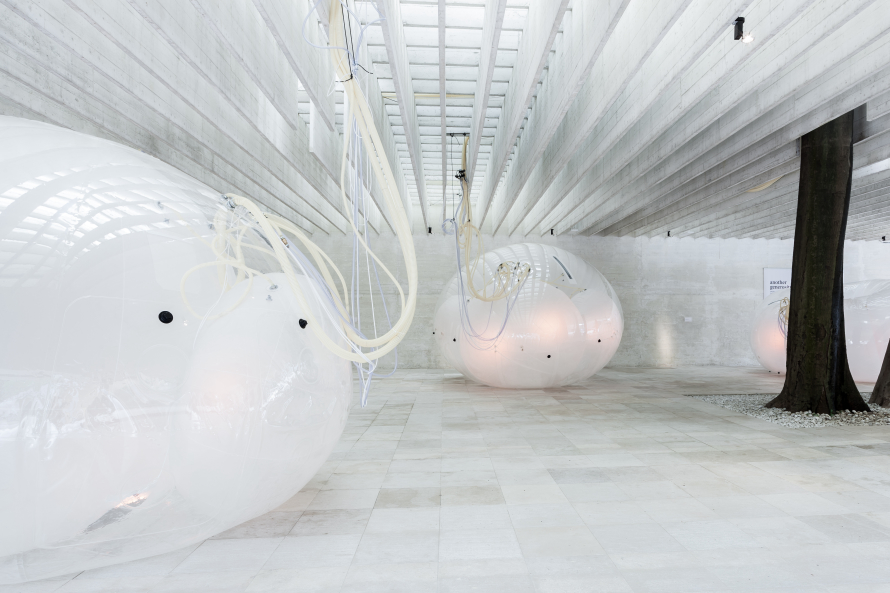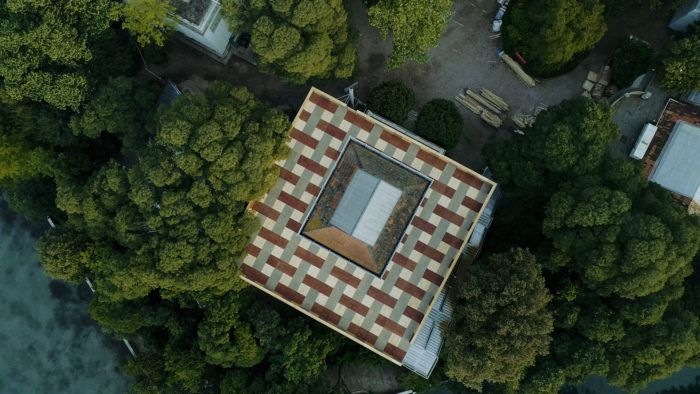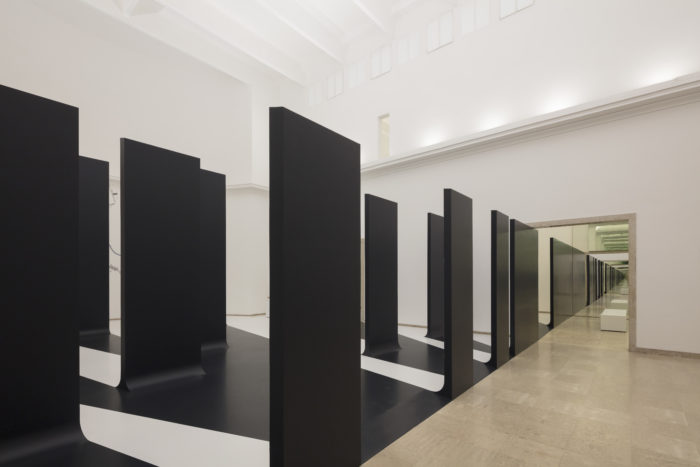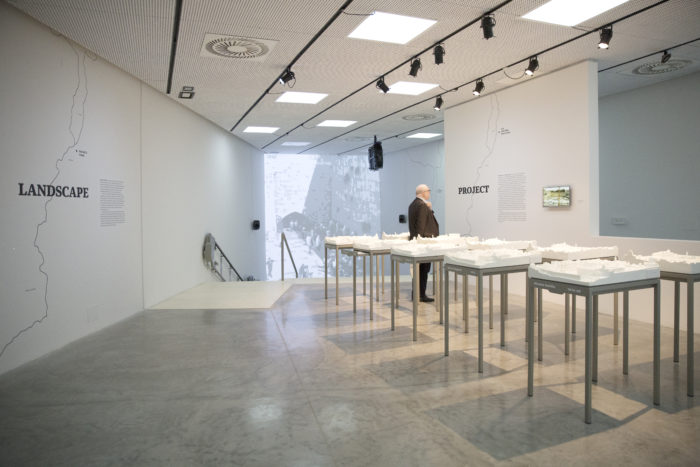
Originally lumped in with art, the Venice Architecture Biennale's history starts in the 1980s when it was decided that a separate event would encourage a more public-minded event. As it has evolved, the Biennale's civic mission has ebbed and flowed, but this year, one could see its purpose in action thanks to this year's theme, "Freespace," conceived by Yvonne Farrell and Shelley McNamara. Interpreted by different curators and firms, "Freespace" encouraged participants to think about generosity as a lens and structure for finding new meaning in the world around us. These four pavilions sought common ends using different means.
The Nordic Pavilion Located on the central drag of the Giardini, the Nordic Pavilion is one of the few spaces where one can see structures in action. The exhibition, “Another Generosity,” responds to this year’s theme by teasing out humanity’s relationship to the natural world that surrounds us through the basic elements we share: air and water. Made into visible entities by a series of inflated structures, the project by Lunden Architecture Company in collaboration with Burohappold Engineering and Aalto University invites visitors to engage with nature as a built environment.

The British Pavilion This year, the halls of the British Pavilion are entirely empty, however the outside of the building has been entirety obscured by scaffolding designed by Caruso St Johns Architects in order to create an “Island” on the roof. Accessible by a flight of stairs on the left, this elevated piazza offers views over the Giardini and the water that surrounds it. A meditation on Britain's own nature as well as Venice’s, the project plays with the codependency of the visible and invisible structures that create our landscape and hints at perhaps how fragile this ecosystem is.

The German Pavilion The entrance of the German Pavilion is concealed by a large black wall, which gives way to a graveyard of others. Once inside, the inspiration for this imposing display becomes clear. The Berlin Wall, which came down 28 years ago, acts as a jumping off point for an exploration of the role walls continue to play in contemporary society. Conceived by GRAFT and Marianne Birthler, “Unbuilding Walls” brings together interviews filmed at different locations around the world where people continue to live along borders and walls. These prescient conversations are displayed simultaneously alongside a wall of mirrors—inviting a moment of self-reflection as well as a chance to feel connected to our universal struggle to bridge the structures that keep us divided.

The Pavilion of Israel When thinking about Israel’s conflicted holy spaces, one rarely speaks about performance, however this delicate dance of objects and people through space is critical to understanding the way complex philosophical debates manifest themselves physically. The four curators behind “In Statu Quo: Structures of Negotiation,” this year’s show (Ifat Finkelman, Deborah Pinto Fdeda, Oren Sagiv and Tania Coen-Uzzielli) decided to dig deeper into this tenuous choreography and scenography of these contested structures through a series of projects both past and present. One highlight, found on the third floor, studies the case of The Cave of the Patriarchs, a site that is shared by both Jews and Muslims during 24 hour stints where a complete overhaul of all objects and signs is performed. Israeli artist Nira Pereg captures this changing of the guards with a two-channel video that emphasizes the things we share rather than our differences.




